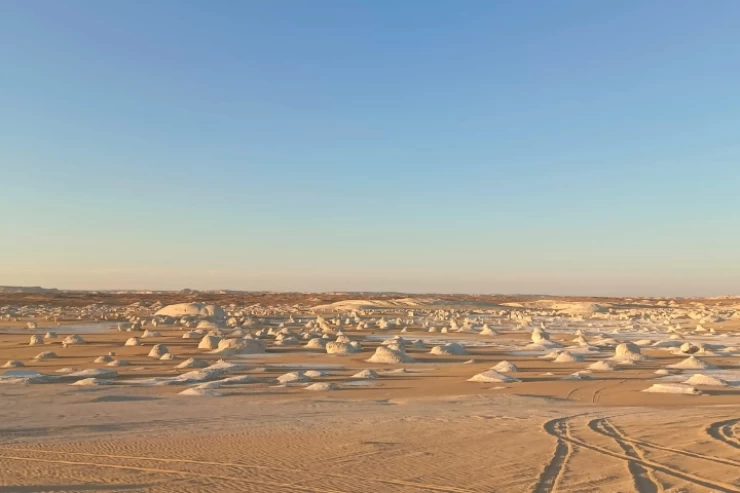
City of the Dead
The City of the Dead or the Necropolis is known in Arabic as "al-Qarafa" where the dead is buried there, where it is located at the foot of Mokattam hill about 5 kilometers from downtown Cairo. The ancient necropolis dates back to the foundation of the first Islamic capital El-Fustat, which was founded by our Muslim Commander Amr ibn al-'As in 641 A.H. The City of the Dead was built to house the corpses which date back to the 7th century. The City of the dead was not only a house for the religious dead characters but also a house for the living poor people who are very happy to share accommodation with their ancient relatives to gain blessings from this historical and religious site. The City of the dead is a house of the most important people throughout ancient Islamic History.
The ancient city was occupied by different tribes, each one of them built its own cemetery and a mosque. The famous Mausoleum of Imam El Shafi was erected on the ruins of the ancient cemetery of the Quraish tribe, the tribe of our prophet Mohamed peace upon him. It is located in the middle of the Cemetery which is divided the Cemetery into two parts, the north, and the south cemeteries. The Southern Cemetery or the "Greater Cemetery" is larger than the northern one and also the oldest one. Its tombs stretched from the east of Ahmed Ibn Tulun mosque to the Citadel in the south.

Ibn Tulun Mosque
The Southern Cemetery is located in the al-Khalifa district. One of the most important districts is Hosh El Bash where the Royal family of Mohamed Ali pasha was buried there. The most important monuments in the Southern Cemetery are the Mausoleum of Imam al-Shafi'i, Sayyida Nafisa Mosque, Sayyida Aisha Mosque, Hosh al-Basha, Mausoleum of Shajar al-Durr, Mashhad of Sayyida Ruqayya, Mausoleum of Sultan al-Ashraf Khalil, Sultaniyya Mausoleum, Mausoleum of Amir Qawsun, Zawiya of Shaykh Zayn al-Din Yusuf.
The Northern Cemetery of Cairo housed the Burgi Mamluks. The Northern Cemetery or the Eastern Cemetery dates back to the Mamluk period. It is also known as the Mamluk Desert Cemetery. It stretched from Salah Salem street to the west and Kobri Al Ebageah to the east. The area was developed by the Mamluk sultans as they started to build their own funerary monuments. The most famous are the Mosque and mausoleum of Sultan Qaitbay, the Mausoleum and complex of Sultan Barsbay, and the Khanqah-mausoleum of Sultan Farag ibn Barquq. It also includes the funerary complexes of Amir Qurqumas and Sultan Inal.
Discover the most important historical places in Egypt Day Tours and visit the landmarks of Cairo through our Cairo Day Tours, before flying to Luxor to enjoy Luxor Day Tours and Aswan Day tours. You can try our Egypt Travel package and select your favorite trip from Egypt's classic tours.


















